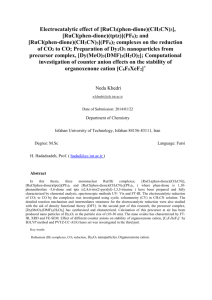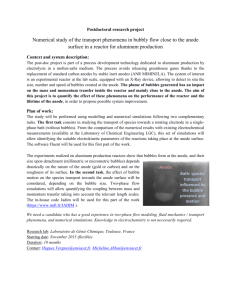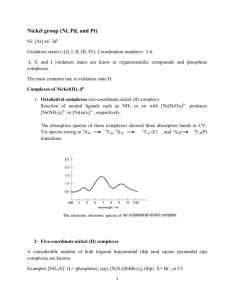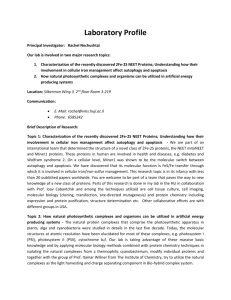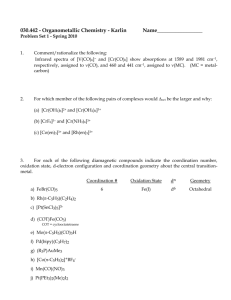Thesis Abstract - Professor H. Hadadzadeh
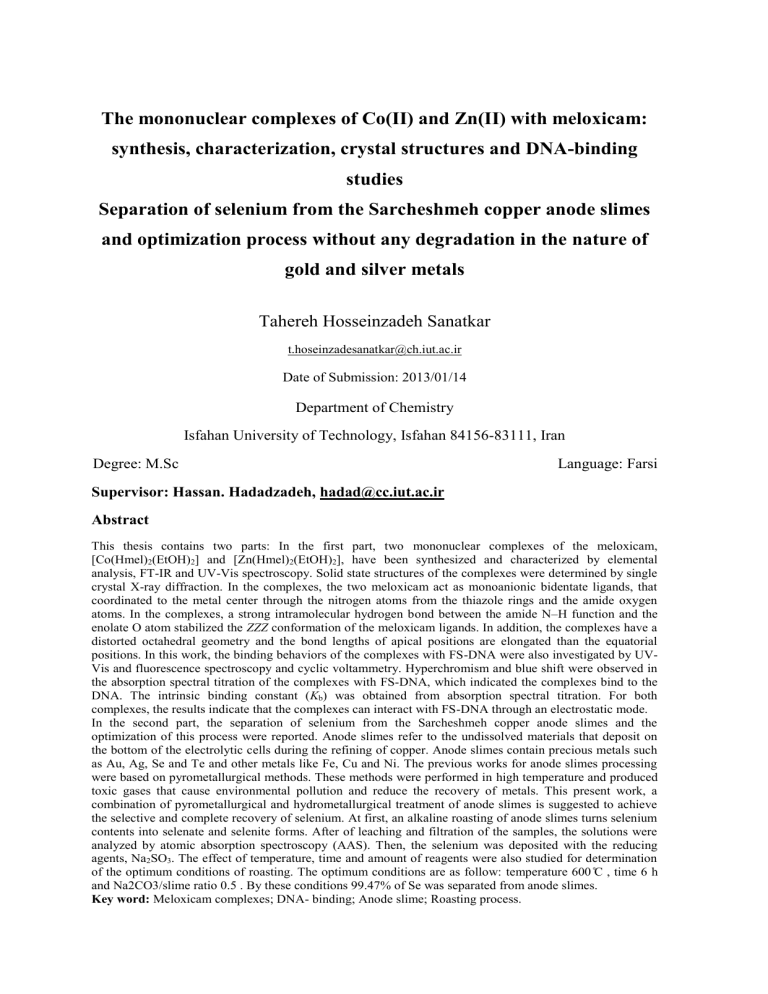
The mononuclear complexes of Co(II) and Zn(II) with meloxicam: synthesis, characterization, crystal structures and DNA-binding studies
Separation of selenium from the Sarcheshmeh copper anode slimes and optimization process without any degradation in the nature of gold and silver metals
Tahereh Hosseinzadeh Sanatkar
t.hoseinzadesanatkar@ch.iut.ac.ir
Date of Submission: 2013/01/14
Department of Chemistry
Isfahan University of Technology, Isfahan 84156-83111, Iran
Degree: M.Sc Language: Farsi
Supervisor: Hassan. Hadadzadeh, hadad@cc.iut.ac.ir
Abstract
This thesis contains two parts: In the first part, two mononuclear complexes of the meloxicam,
[Co(Hmel)
2
(EtOH)
2
] and [Zn(Hmel)
2
(EtOH)
2
], have been synthesized and characterized by elemental analysis, FT-IR and UV-Vis spectroscopy. Solid state structures of the complexes were determined by single crystal X-ray diffraction. In the complexes, the two meloxicam act as monoanionic bidentate ligands, that coordinated to the metal center through the nitrogen atoms from the thiazole rings and the amide oxygen atoms. In the complexes, a strong intramolecular hydrogen bond between the amide N–H function and the enolate O atom stabilized the ZZZ conformation of the meloxicam ligands. In addition, the complexes have a distorted octahedral geometry and the bond lengths of apical positions are elongated than the equatorial positions. In this work, the binding behaviors of the complexes with FS-DNA were also investigated by UV-
Vis and fluorescence spectroscopy and cyclic voltammetry. Hyperchromism and blue shift were observed in the absorption spectral titration of the complexes with FS-DNA, which indicated the complexes bind to the
DNA. The intrinsic binding constant ( K b
) was obtained from absorption spectral titration. For both complexes, the results indicate that the complexes can interact with FS-DNA through an electrostatic mode.
In the second part, the separation of selenium from the Sarcheshmeh copper anode slimes and the optimization of this process were reported. Anode slimes refer to the undissolved materials that deposit on the bottom of the electrolytic cells during the refining of copper. Anode slimes contain precious metals such as Au, Ag, Se and Te and other metals like Fe, Cu and Ni. The previous works for anode slimes processing were based on pyrometallurgical methods. These methods were performed in high temperature and produced toxic gases that cause environmental pollution and reduce the recovery of metals. This present work, a combination of pyrometallurgical and hydrometallurgical treatment of anode slimes is suggested to achieve the selective and complete recovery of selenium. At first, an alkaline roasting of anode slimes turns selenium contents into selenate and selenite forms. After of leaching and filtration of the samples, the solutions were analyzed by atomic absorption spectroscopy (AAS). Then, the selenium was deposited with the reducing agents, Na
2
SO
3
. The effect of temperature, time and amount of reagents were also studied for determination of the optimum conditions of roasting. The optimum conditions are as follow: temperature 600 ̊C , time 6 h and Na2CO3/slime ratio 0.5 . By these conditions 99.47% of Se was separated from anode slimes.
Key word: Meloxicam complexes; DNA- binding; Anode slime; Roasting process.
